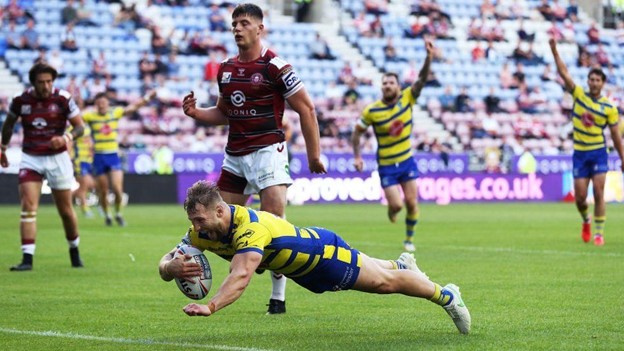Rugby League

Rugby League
Rugby league, a thrilling and highly competitive sport, boasts major competitions in England and Australia. The pinnacle of this gripping game is undoubtedly the Rugby League World Cup, a celebrated event in the international sports calendar. This global spectacle showcases the best talent from around the world, making it a true testament to the sport’s popularity and reach. However, the World Cup is not the only stage where rugby league shines; international tours by the Australian and British national teams have captivated audiences since their inception in 1954.
In the world of rugby league, international competitions and tours provide fans with unforgettable moments, as nations come together to display their prowess on the field. These events showcase the rich history and bright future of this beloved sport, capturing the hearts of fans worldwide.
Rugby sevens :
Rugby sevens, a captivating variant of rugby union, has rapidly gained popularity worldwide. In this high-octane sport, both strategy and speed are paramount, and it’s played on a standard-sized rugby union field, but with a twist – each team consists of just seven players. This format creates a faster-paced and action-packed experience for both players and spectators. Unlike the traditional 80-minute rugby union match, a rugby sevens game is a thrilling 15-minute sprint that keeps fans on the edge of their seats.
The origins of rugby sevens can be traced back to the picturesque town of Melrose in Scotland, where it first took shape in 1883. Over the years, it has transcended borders and evolved into a global sensation. Today, rugby sevens is played in numerous countries, captivating audiences with its unique blend of athleticism, skill, and excitement.
The sport has not only gained a dedicated following but has also secured its place on the world stage. The Rugby World Cup Sevens and the IRB Sevens World Series are among the major competitions that draw top teams and players from across the globe. These events showcase the sport’s elite talent and provide a platform for countries to prove their mettle in the world of rugby sevens.
give me some important question and answers for this topic”Rugby League”
Q1: What is the basic objective of Rugby League, and how is it different from Rugby Union? A1: Rugby League’s basic objective is to score more points than the opposing team by carrying or kicking the ball over the opponent’s try line. It differs from Rugby Union in terms of rules, number of players, and style of play.
Q2: How many players are there in a Rugby League team, and what positions do they play? A2: A standard Rugby League team consists of 13 players, each with specific positions. Positions include fullback, wingers, centres, halves, forwards, and a hooker, each with unique roles on the field.
Q3: What is the scoring system in Rugby League, and how can teams earn points during a match? A3: Teams can earn points through tries, conversions, penalty goals, and field goals. A try is worth four points, a conversion two points, a penalty goal two points, and a field goal one point.
Q4: How is possession determined in Rugby League, and what happens after a team scores a try? A4: Possession is determined by the team that successfully gains and maintains control of the ball during a set of six tackles. After scoring a try, the scoring team is awarded a conversion attempt.
Q5: What is the role of the scrum in Rugby League, and how is it different from the scrum in Rugby Union? A5: In Rugby League, a scrum is formed after certain rule infringements. Unlike Rugby Union, the scrum is uncontested, with the team awarded possession to feed the ball into the scrum.
Q6: How does the concept of “Six Tackles” work in Rugby League, and how does it impact the flow of the game? A6: The attacking team has six tackles to advance the ball and score. If they are tackled on the sixth tackle, possession is turned over to the opposing team, influencing strategic play and ball control.
Q7: What major Rugby League competitions exist globally, and which teams are traditionally strong in the sport? A7: Major Rugby League competitions include the National Rugby League (NRL) in Australia, Super League in the UK, and the State of Origin series. Historically strong teams include Australia, England, and New Zealand.
Q8: How does Rugby League contribute to the development of physical fitness and teamwork among players? A8: Rugby League promotes physical fitness through its demanding nature, requiring players to possess strength, speed, and endurance. The sport emphasizes teamwork, strategic play, and effective communication.
Q9: What safety measures and rules are in place in Rugby League to ensure the well-being of players during matches? A9: Safety measures include rules against dangerous tackles, high tackles, and the use of protective gear. Referees enforce these rules to minimize the risk of injuries and ensure fair play.
Q10: How has Rugby League evolved over the years, and what notable changes or innovations have shaped the modern game? A10: Rugby League has evolved with changes in rules, player fitness, and strategic approaches. Innovations like video referee systems, shot clocks for scrums, and rule adjustments have contributed to the modernization of the game.

